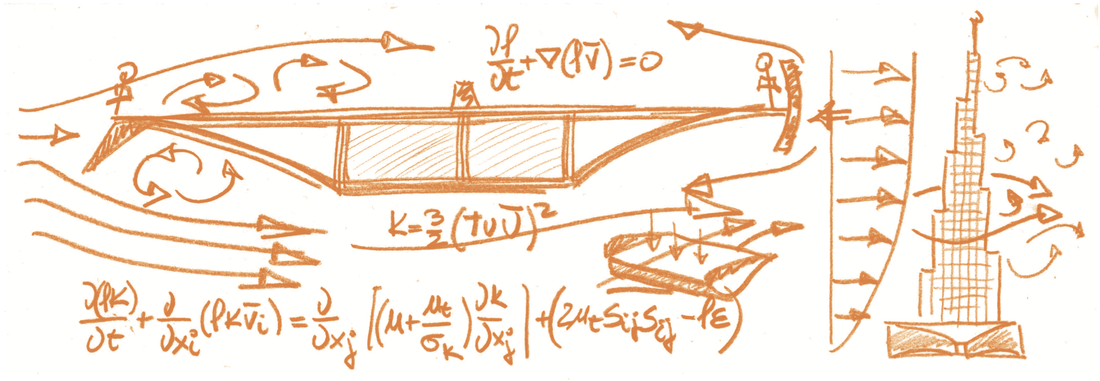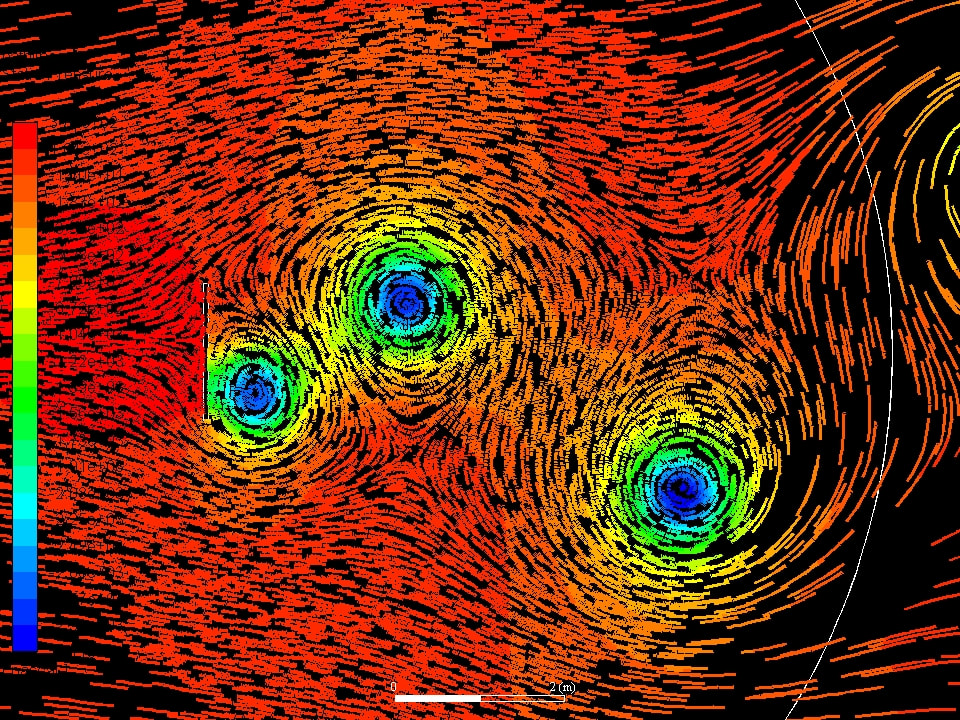WIND ENGINEERING: Based on Alan G. Davenport’s wind loading chain: the wind loading experienced by a particular building or structure is determined by the combined effects of the local wind climate, which must be described in statistical terms; the local wind exposure, which is influenced by terrain roughness and topography; the aerodynamic characteristics of the building shape and the potential for load increases due to possible wind-induced resonant vibrations; and clear criteria must be in place for judgingthe importance of the consequences of the predicted wind action. (Isyumov, N. (2012). Alan G. Davenport’s mark on wind engineering. Journal of Wind Engineering and Industrial Aerodynamics, 104-106, 12–24. doi:10.1016/j.jweia.2012.02.007).
Wind engineering integrates concepts from meteorology, fluid dynamics, mechanics, geographic information systems and a number of specialist engineering disciplines including aerodynamics, aeroelasticity and structural dynamics. The tools used include analytical calculation and atmospheric models, wind tunnels (atmospheric boundary layer or many other types), and computational fluid dynamics models. The big picture in which this science can be inserted is the Collar´s triangle.
Wind engineering integrates concepts from meteorology, fluid dynamics, mechanics, geographic information systems and a number of specialist engineering disciplines including aerodynamics, aeroelasticity and structural dynamics. The tools used include analytical calculation and atmospheric models, wind tunnels (atmospheric boundary layer or many other types), and computational fluid dynamics models. The big picture in which this science can be inserted is the Collar´s triangle.
See our work on Wind Engineering right here:
|
#formulawindy gathers all our work related to Wind Tunnel tests (Aeroelasticity & Aerodynamics, Hydraulic Machinery, Wind Engineering, Pollutant Dispersion, Aeroacoustics, even Water Tunnel tests included) and it is formed exclusively by Professors and Researchers with the Department of Energy and GIFD (Spanish Official Research Group) of the University of Oviedo. Visit us: http://gifd.grupos.uniovi.es/inicio, or A. Navarro-Manso.
|




